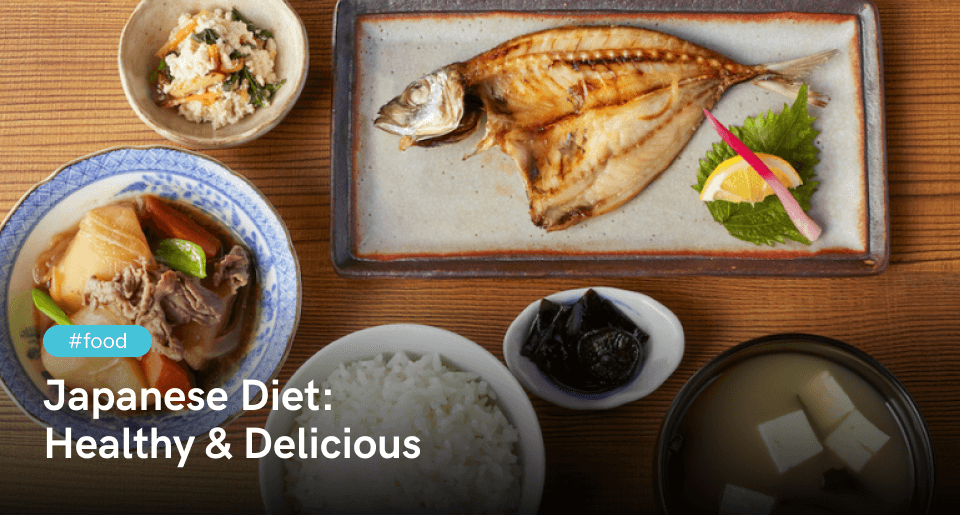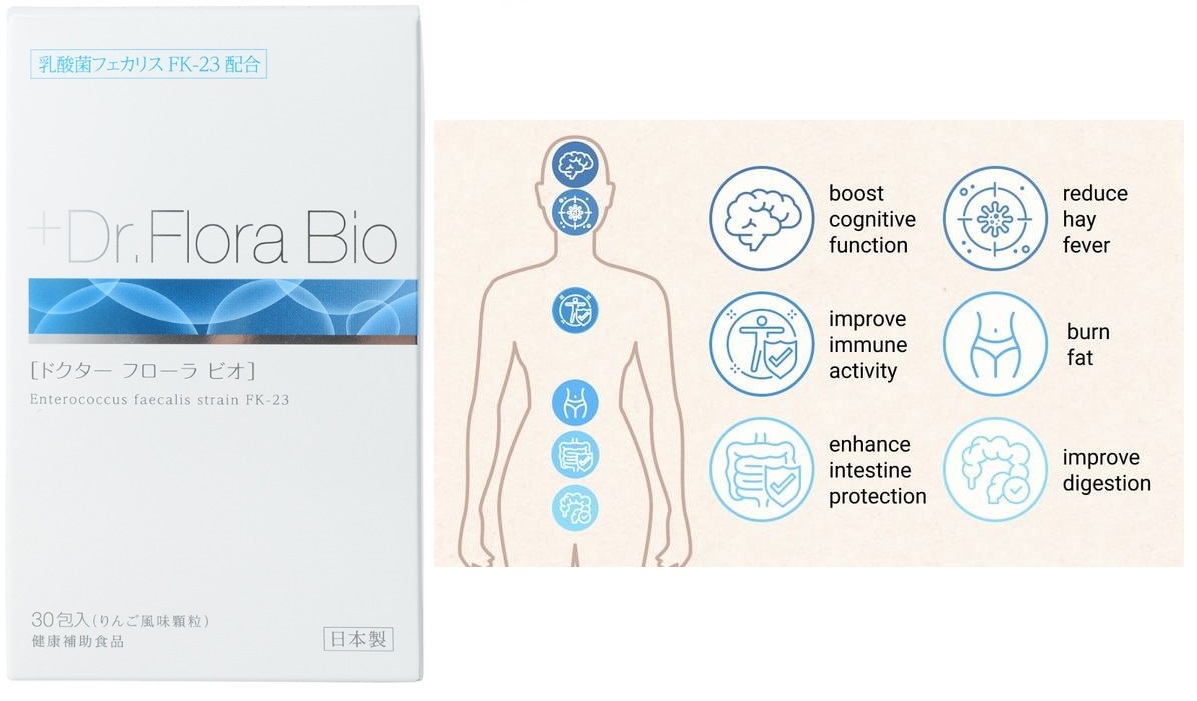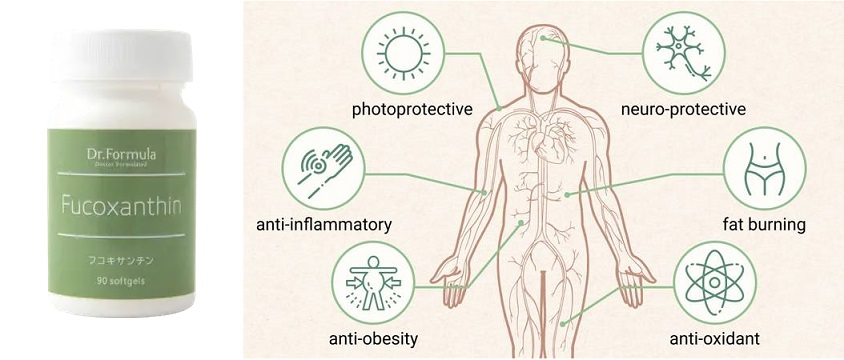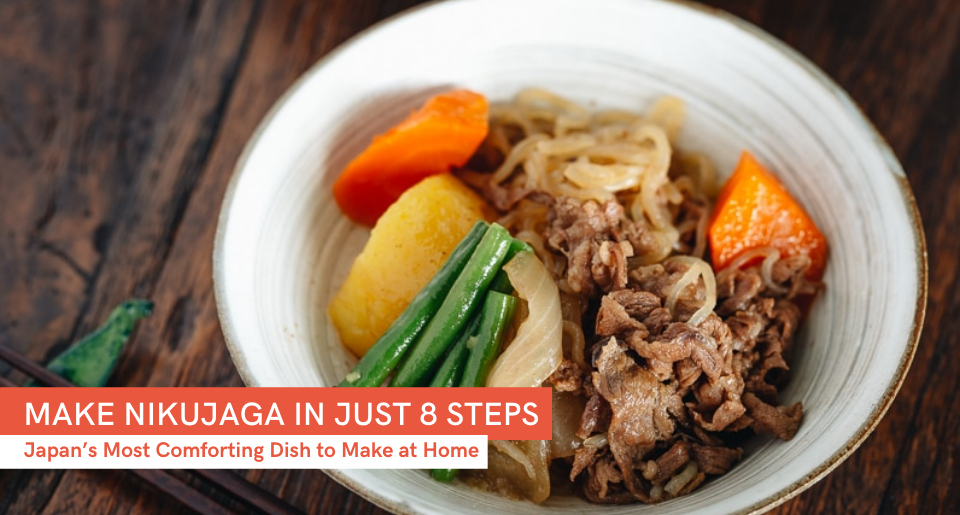Struggling to lose weight and keep yourself healthy?
Don’t worry, that’s a common problem affecting many people these days.
But there's a diet that can help you lose weight and stay fit without excessive sacrifices:
The Japanese diet!
It's so popular, in fact, that it was registered as a UNESCO Intangible Cultural Heritage in December 2013.
Want to know more? If you are ready to discover its secrets and lose weight, read on!
Contents
Japanese diet and cuisine
The traditional Japanese diet consists of seasonal foods served in a variety of small dishes, with very few refined ingredients and sugar.
1 soup, 3 dishes
One major concept in the Japanese diet is ichiju-sansai (一汁三菜), which means a meal consisting of one soup (miso or otherwise) and three dishes.
Here, the three dishes are defined as:
- A main (okazu, おかず)
- Rice (the staple of Japanese cuisine)
- Pickles (tsukemono, 漬物)
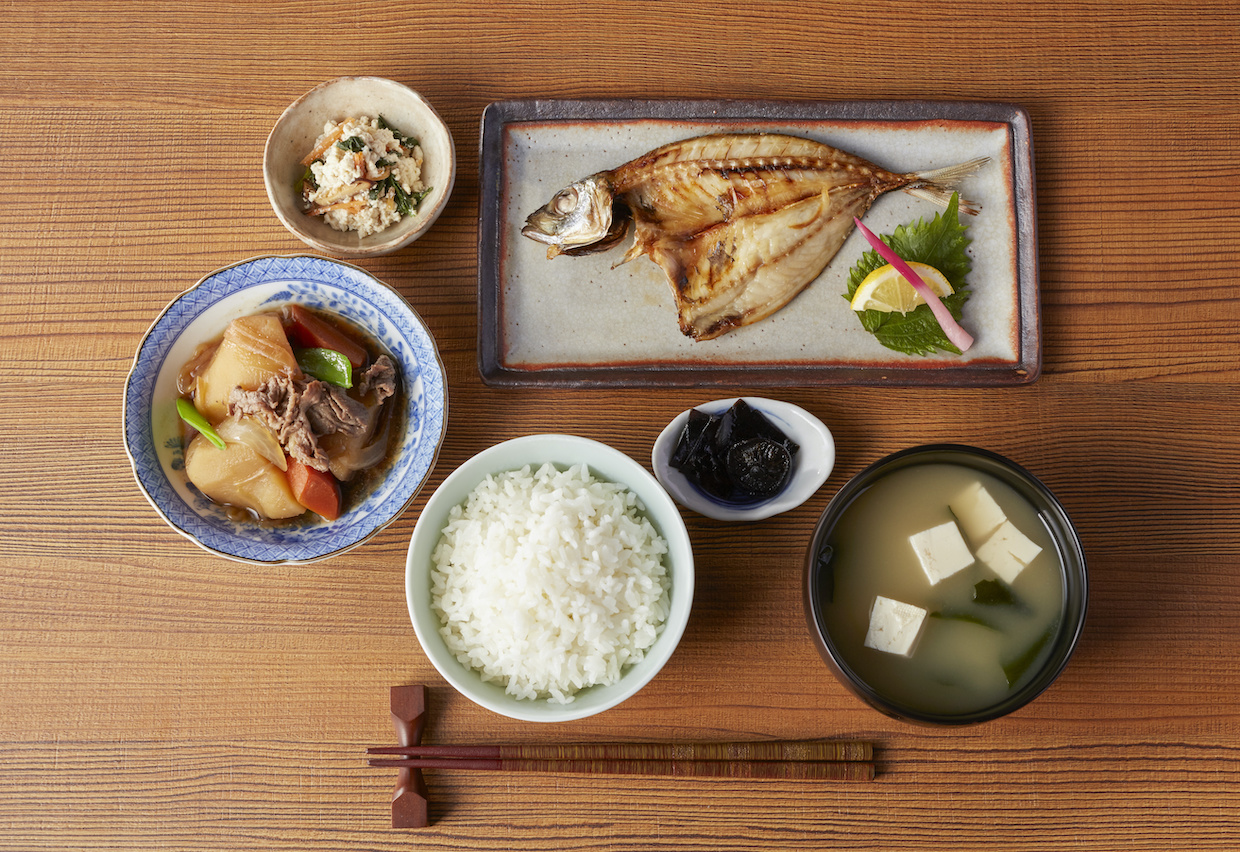
An example of Ichiju sansai 一汁三菜
This approach results in a well-balanced diet, as you get:
- Animal protein and fat from the okazu
- Carbohydrates (energy) from the rice
- Vitamins, minerals, and fiber from the soup, pickles, and vegetable side dishes
We'll further explore the concept of ichiju-sansai later on in this post.
Cooking styles
In terms of food preparation, the Japanese cuisine prefers simmered, steamed, and raw -- followed by boiled and grilled.
Frying and sauteeing are less common in the typical Japanese diet, although fried food (in particular fried chicken and croquettes) has become more popular over time due to Western influence and can be easily found almost everywhere.
These cooking methods are also beneficial as they prevent the breakdown of nutrients that can occur when food is cooked at high heat (the aforementioned frying, for example). Just consider that the amount of EPA and DHA in fried seahorse mackerel (aji) is only about a tenth of what is in raw fish (sashimi)!
The main characteristic of Japanese cuisine is the use of seasonal ingredients with high nutritional value, fermented foods, and small amounts of seasonings and dressings. Seasonings such as miso, natto, soy sauce, and mirin (as in fermented foods) regulate the intestinal environment. Japanese food tends to be high in salt, the amino acids and glutamic acid contained in kelp (kombu) and dried fish flakes (bonito) serve as umami ingredients, reducing the salt content, keeping your dishes as healthy and light as ever.
Ichiju-sansai: A closer look
We touched upon the soup and dish concept of ichiju-sansai earlier in this post.
Let's now take a closer look at how ichiju-sansai meals are actually divided up.
1. Soup
Typically a miso soup made with seaweed, shellfish, or tofu and vegetables in a fermented soybean stock.
2. Staple food
An example of staple food in the Japanese diet would be steamed rice or some noodles (soba, ramen, or udon).
For a healthy and balanced diet, we absolutely suggest trying brown rice as a staple food.
According to experts, brown rice has less carb content, is low in calories, and is enriched with essential nutrients -- like phenols and flavonoids, two types of antioxidants that help reduce cell damage and premature aging.
Brown rice also provides you with many vitamins and minerals, making it the best substitute for white rice and therefore a great weight loss tool.
3. Main dish
This is often seafood, tofu, or natto.
4. Side dishes
Vegetables (raw, steamed, boiled, sautéed, grilled, or pickled), wild plants, seaweed, and raw or pickled fruit.
Nutrients in the Japanese diet
Japanese foods are jam-packed with helpful nutrients that all add up to one very healthy diet. (It's little surprise, then, that Japan constantly ranks as the country with the world's longest life expectancy.)
To help you better choose how to make your ichiju-sansai meal, let's explore different nutrient macros -- and the foods in Japan that belong to each category!
I. Carbohydrates
Despite being seen as one of the nutrients prohibited while dieting, carbohydrates don't actually have any significant impact on your weight -- if taken in the correct quantity.
In fact, due to the energy boost they provide, carbohydrates are all but essential for your body if your weight loss plan involves any sort of physical exercise (which no doubt it does!).
When choosing your carbohydrates, just be careful about what you choose.
As a simple rule, remember that all sugars are carbohydrates, but not all carbohydrates are sugar -- and that reducing the amount of sugar absorbed through food is important if you are trying to lose weight.
Deciding which kind of carbohydrates are good for you might be hard, so if you are lost give a check to our suggestions below!
Shirataki noodles (Konjac)
Shirataki noodles are made with water and starch from the roots of the konjac plant, a type of Asian yam largely used in Japan and are also known as “konjac noodles” or “miracle noodles.”
The starch from the konjac plant is also used "konnyaku," basically a starch block that can be eaten on its own or used for example as a meat substitute. Konjac starch is gelatinous and clings to itself, which makes it ideal for forming into noodles.
Shirataki noodles are mostly famous due to the carbohydrate they contain, called glucomannan.
Glucomannan behaves like a food fiber in the digestive tract, preventing the body from metabolizing it for energy, making Shirataki noodles very low in calories and carbohydrates and ideal for your diet.
You can find the best Japanese shirataki noodles here.
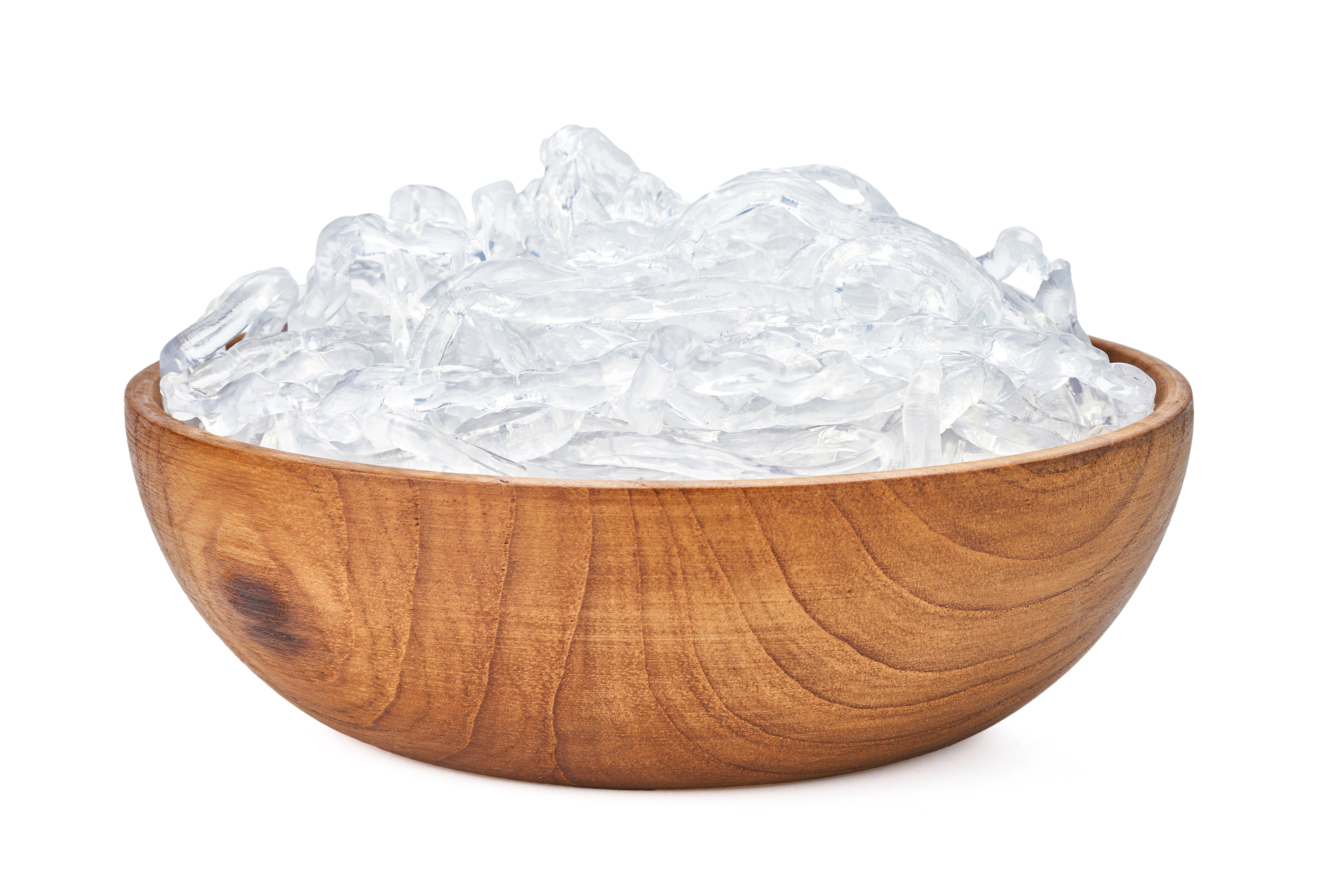
A bowl of white shirataki noodles
Brown rice
As previously mentioned, brown rice has a lower carb content due to its lower glycemic index, and is low in calories.
It's also enriched with essential nutrients, like phenols and flavonoids -- two types of antioxidants that help reduce damage to cells and reduce the risk of premature aging.
Brown rice also provides you with many vitamins and minerals, making it the best substitute for white rice (and hence, great for losing weight).
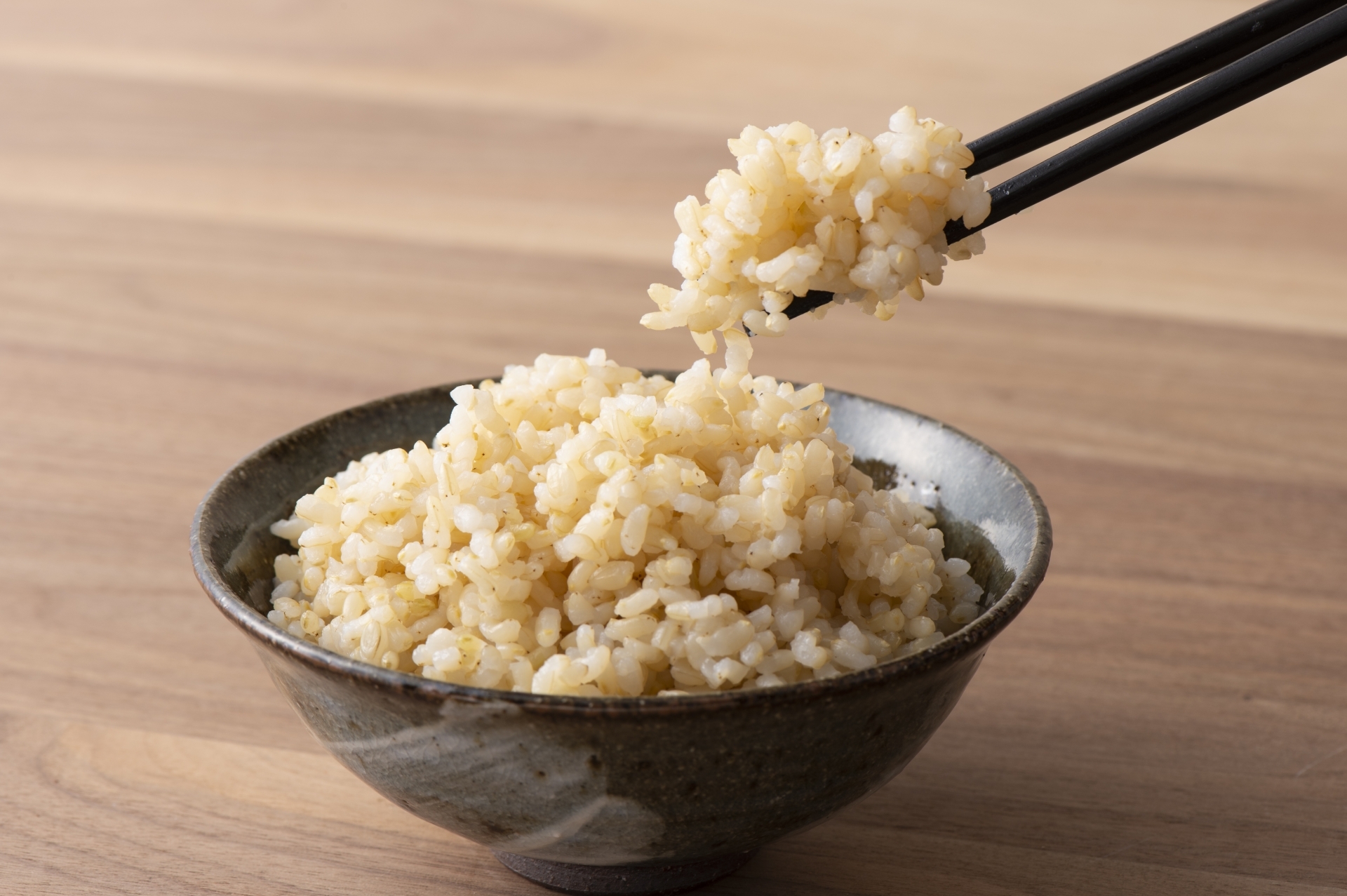
A serving of brown rice
II. Protein
Proteins are responsible for the growth, repair, and maintenance of cells. They're a necessary component of any diet because they fuel your cells so you have the energy you need to stay active, helps maintain muscle mass, keep blood sugars stable, and maintain hunger.
Despite proteins being seen as a mythical aid for losing weight, a protein-only diet will actually overcharge your body -- forcing it to take the energy necessary from your fat resources and most importantly from your muscles, leading to a possible nutritional imbalance and related physical problems. Remember to always keep your diet balanced and make sure to have a decent intake for all your macronutrients! (Carbohydrates, proteins, fats)
Sashimi (刺身)
Sashimi mainly consists of thinly sliced raw food: usually fish and seafood, but also meats (depending on the area). It is common, for example, to eat horse sashimi in the Kyuushu region, or even chicken sashimi all over Japan!
It should not be confused with sushi, which consists of seasoned vinegared rice shaped into mounds and usually topped with raw fish; sashimi is always just the raw item, whether is fish, seafood, or meat, usually just eaten with a light sauce like soy sauce and eventually wasabi to add spicy flavor to it.
Sashimi is great not only because of its protein content (100 g of tuna sashimi contains around 35 g of protein!), but also because it's rich in essential minerals and vitamins, like vitamin B, selenium, magnesium, and vitamin D.
The amount may vary depending on the fish but rest assured that sashimi is the perfect meat substitute, and offers great nutritional value without too many calories.
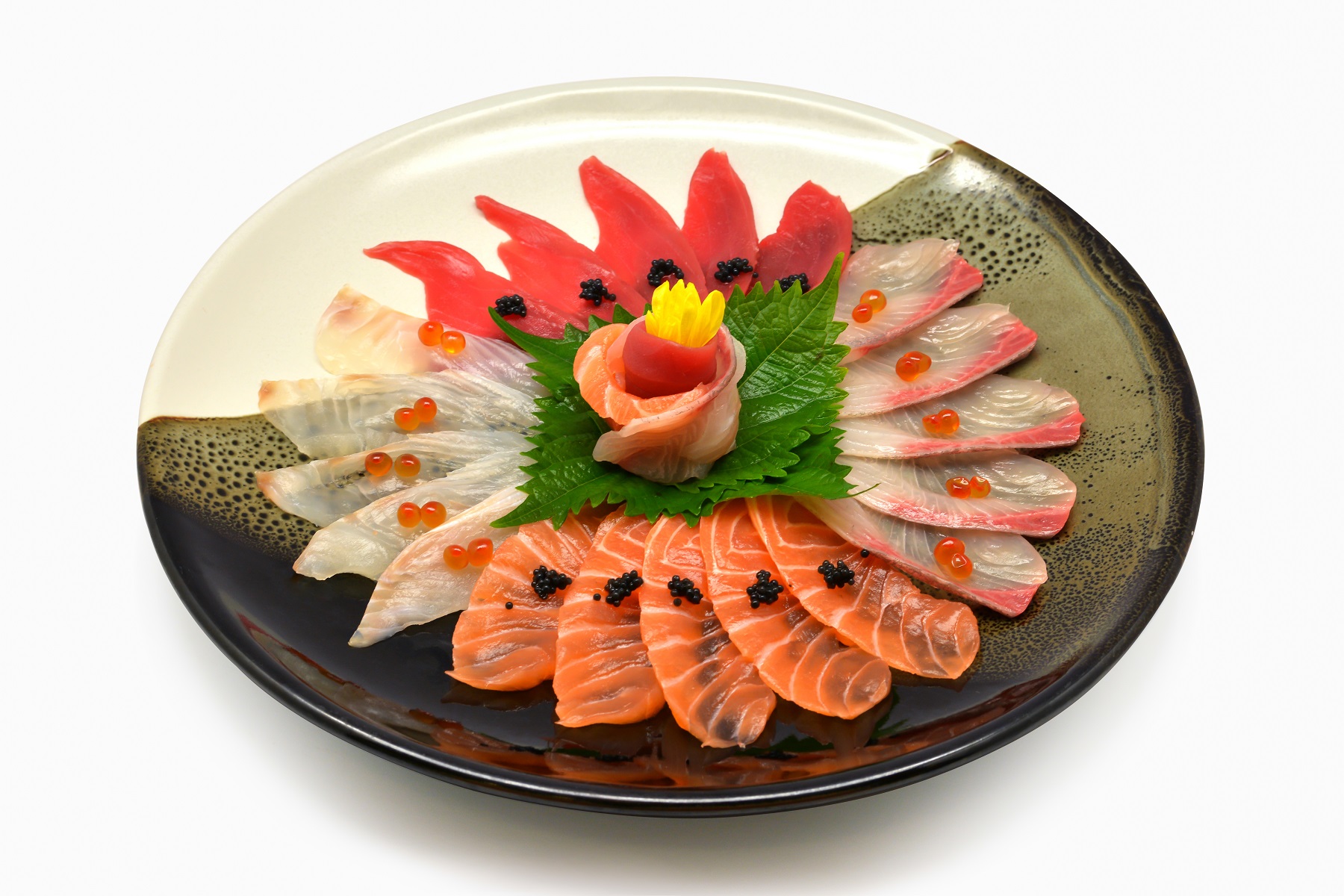
Salmon, Red Tuna, Young Yellowtail Tuna and Amberjack sashimi plate
Tofu (豆腐)
Tofu, also known as bean curd in English, is prepared by coagulating soy milk and then pressing the resulting curds into solid white blocks, in a process similar to cheese making.
Nutritionally, tofu is low in calories and high in protein, while also having good amounts of iron, and calcium or magnesium content depending on the coagulants.
Due to these characteristics, tofu has become one of the most popular foods among vegetarians and in low-carb diets and is considered one of the best foods to lose weight and stay in shape.
Cooking tofu is also pretty easy as it doesn’t have any strong flavor and it’s perfect to accompany other meals or just be eaten with some soy sauce or wasabi.
Calories per 100 g: Around 56 g
Protein per 100 g: 5-7 g
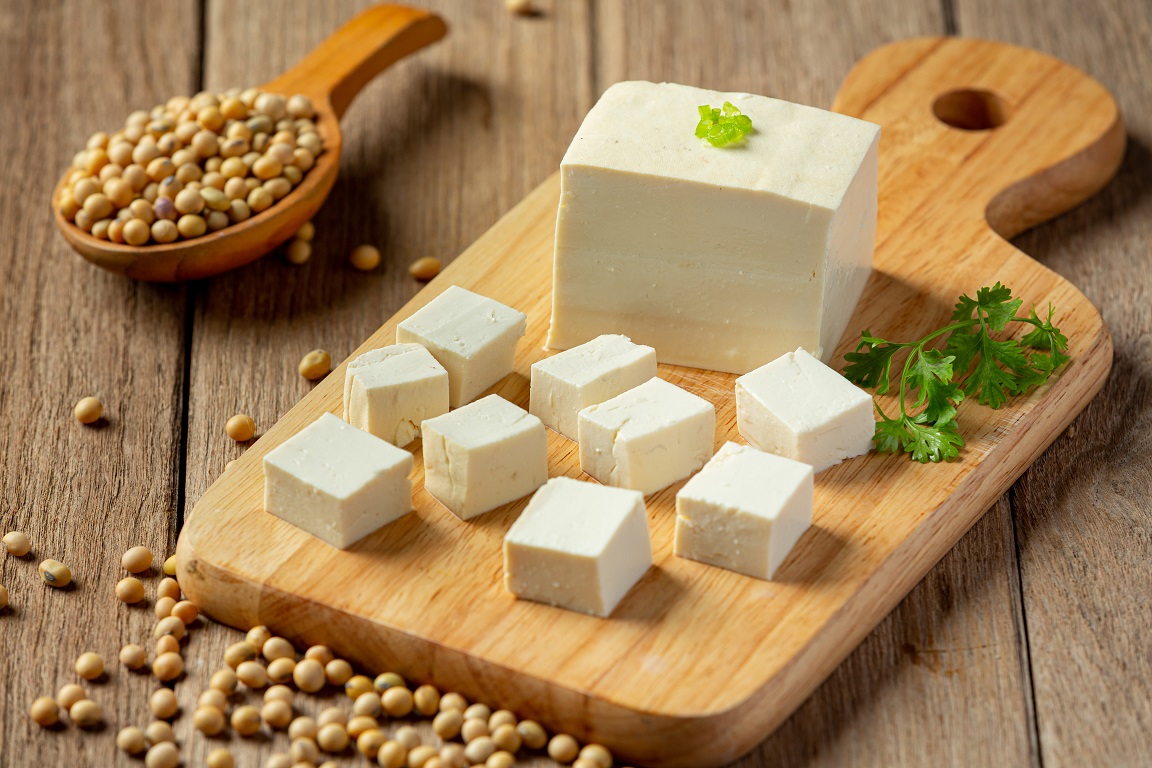
Japanese tofu
Koya-dofu (高野豆腐)
Koya-dofu is basically extra firm freeze-dried tofu. It looks like a hard sponge and needs to be soaked before use.
Due to these characteristics, this tofu is higher in calories and protein, so it is usually added to soups in slices of 15 to 20 grams.
Calories per 17 g (1 slice): 85 kcal
Protein per 17 g (1 slice): 8.2 g
Great if you are looking to increase your nutrient intake without eating too much!
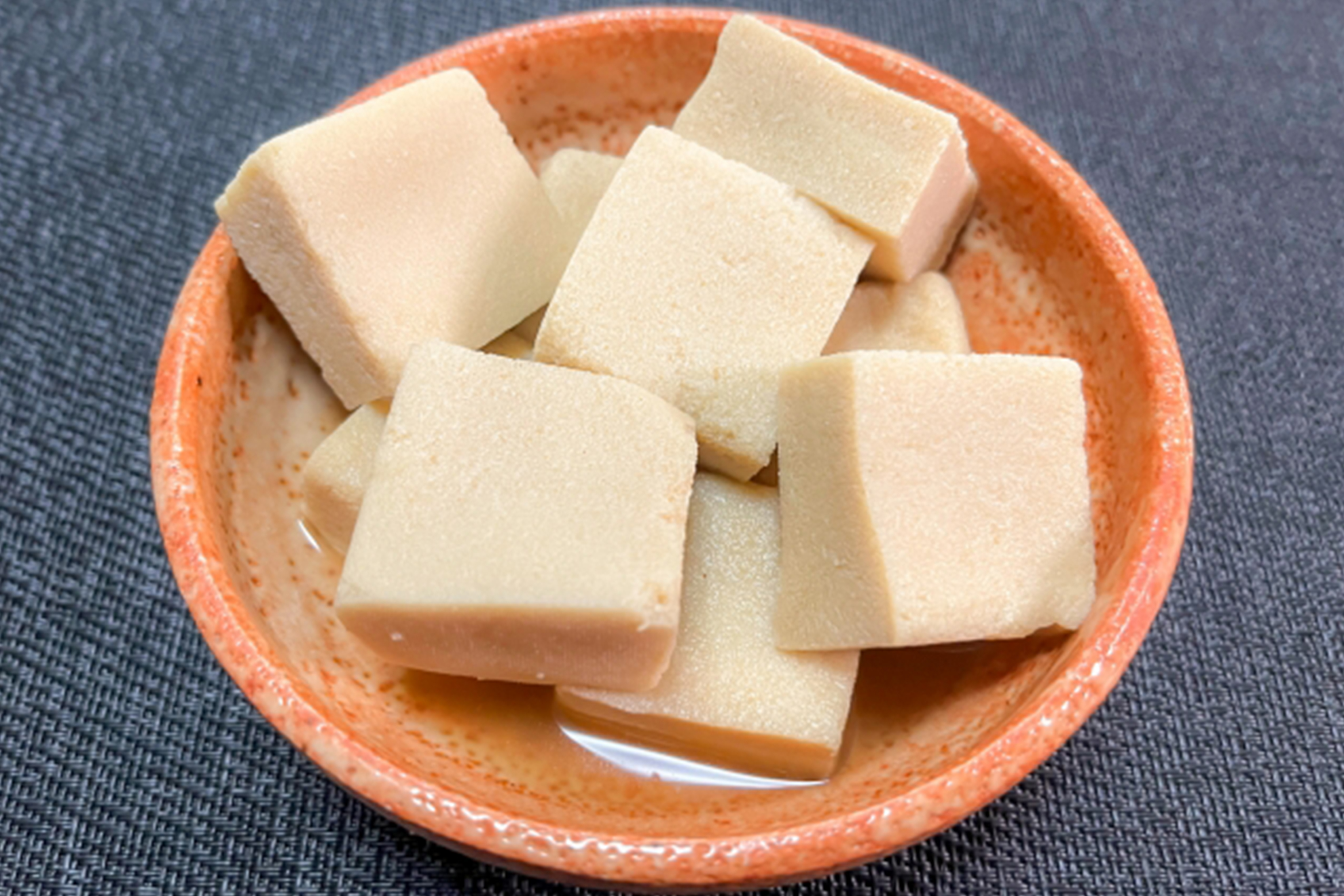
Koya-dofu, ready to eat! Delicious!
Natto (納豆)
Natto has become very popular during recent years, thanks to its nutritional content and various health benefits.
Natto is a traditional Japanese dish made from fermented soybeans, famous for its sticky and slimy texture (a feeling referred to as nebaneba in Japanese) texture that will make you love it (or hate it, depending on your taste).
It is also famous for its peculiar “pungent” smell that may be hard to accept at the beginning but definitely becomes easier to deal with after a few tries. It is mainly used as a topping with rice and soy sauce and can be perfect at any time of the day (every time is good to be healthy!).
Besides the high protein content -- around 15 g of protein per 100 g of natto -- it also packs a generous dose of vitamins (Vitamin K, B1, B2, B6, B12, and C). This helps keep your skin beautiful and clean, improves your digestion, makes your bones and immune system stronger, and helps you stay healthy overall.
Natto can be eaten anytime during the day, but many Japanese prefer to have it for breakfast, usually together with (brown) rice.
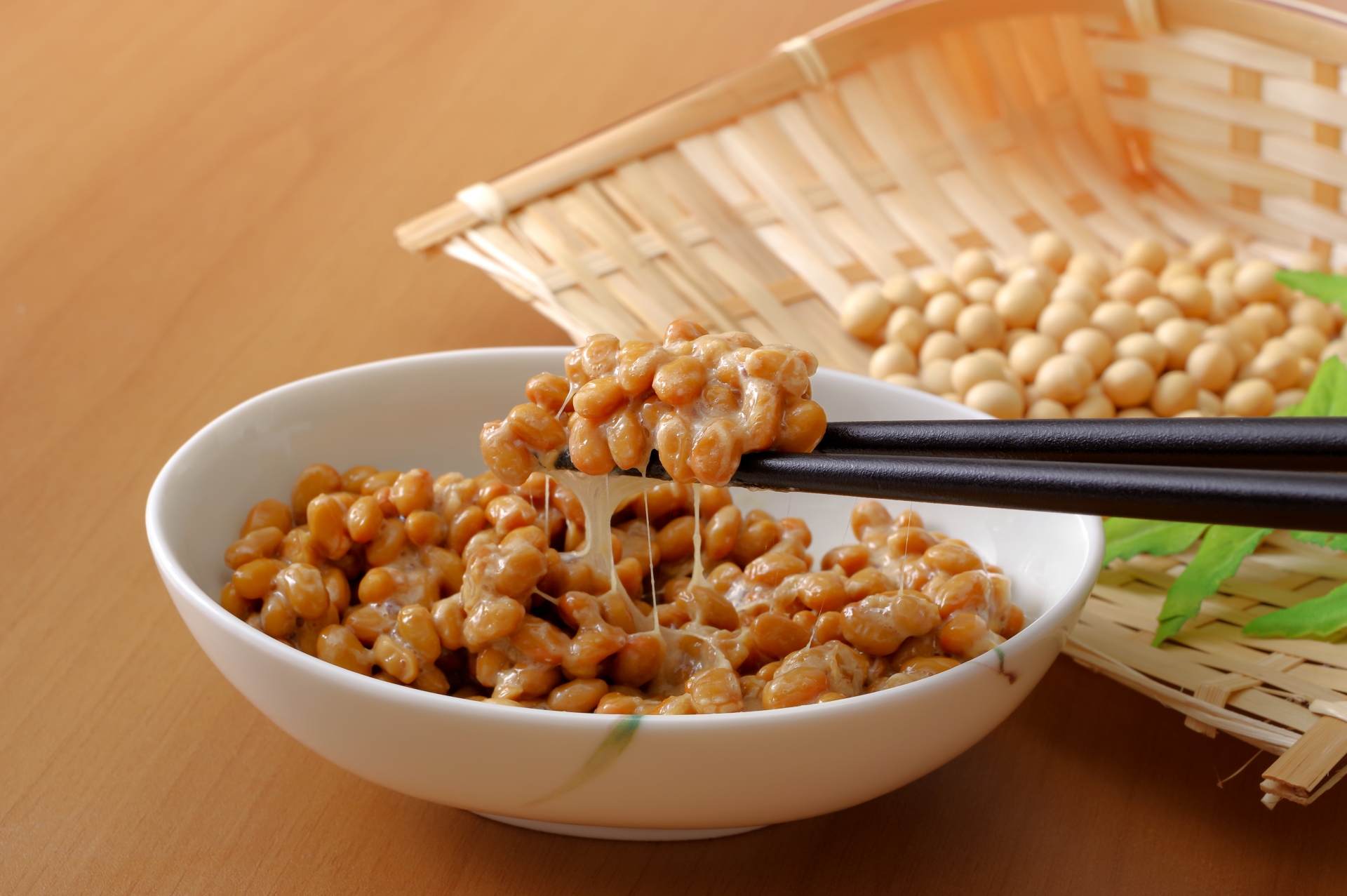
Why breakfast, you ask?
One reason is that, obviously, the nutritional boost is the perfect energizer for your busy mornings.
Aside from that, the fermentation process also means that natto contains probiotics for a healthy gut and easy digestion. Moreover, it doesn’t really need to be cooked per se, as you can just put it on top of some warm rice.
Though we'd say the smell isn't nearly as off-putting as some "legends" would say, you can definitely add some soy sauce and karashi (Japanese mustard) to cover the peculiar smell and taste of natto if needed.
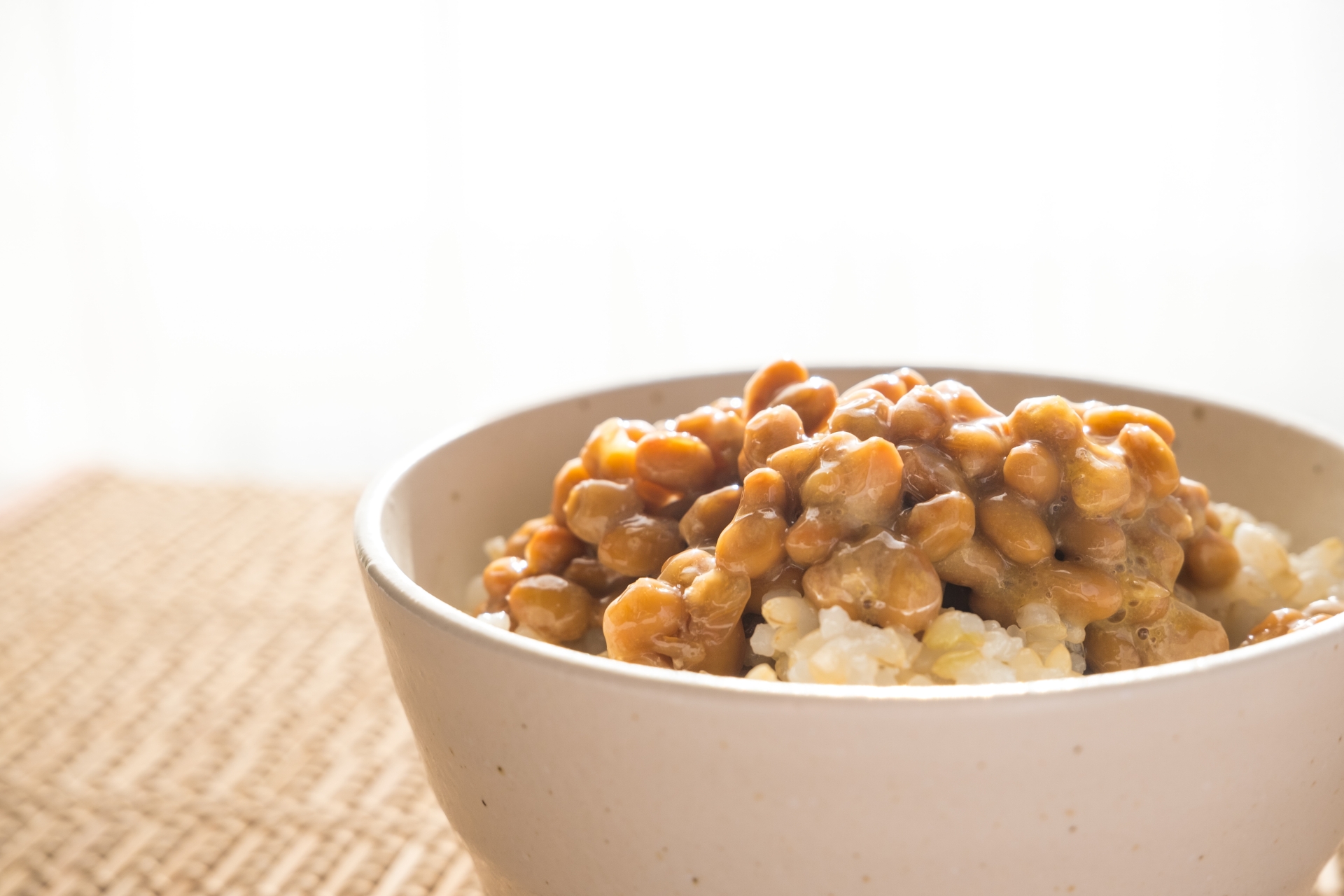
Rice with natto topping
In case you should need more support for your gut health, we highly suggest trying Dr. Flora Bio, exclusive Japanese probiotics from Dr. Formula - one of the most trusted Japanese supplement brands. You can buy it here!
Benefits of Dr.Flora Bio probiotics
III. Vitamins and minerals
Seaweeds - Konbu
Konbu (昆布) is Japanese kelp. It's usually eaten together with miso soup or other foods like sashimi.
Thanks to the nutrients contained within, konbu is a great addition to a healthy lifestyle, and is definitely a must if you are going to try a well-balanced Japanese diet.
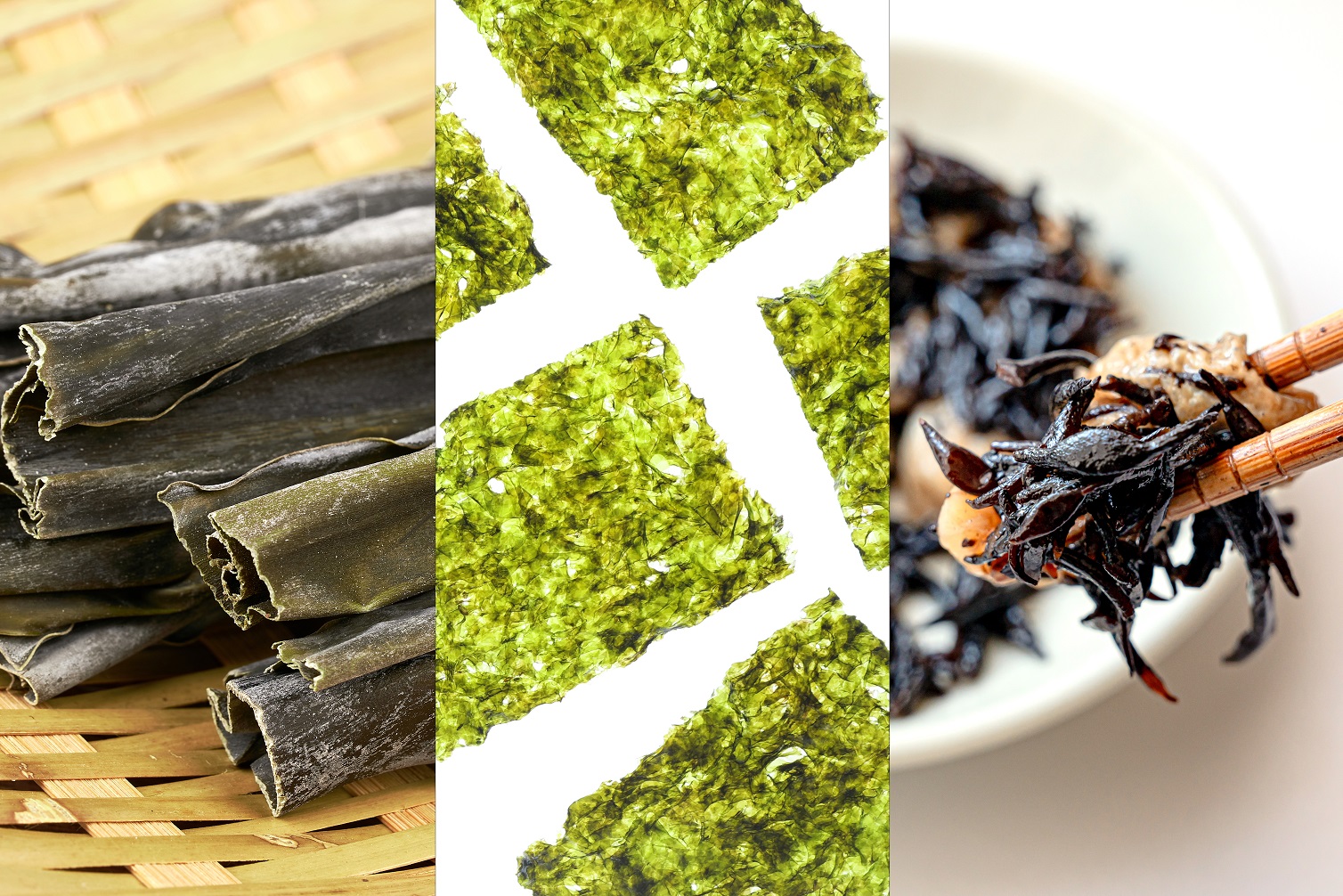
Konbu, Nori, and Hijiki seaweeds
Besides nutrients like calcium, magnesium, fiber, and Vitamins A, B1, and B2, Japanese brown kelp also contains a pigment called fucoxanthin, which has proven body-slimming properties and is extremely valuable as it amounts to only 0.01% of the kelp weight.
This means that to obtain 3 g of fucoxanthin you need at least 30 kg of brown kelp!
Due to its scarcity and proven health effects, fucoxanthin has become extremely popular in Japan and is used as a slimming supplement by thousands of users.
If you are interested in adding some additional support to your diet, you definitely need to try it!
You can find one of the most trusted Japanese brands “Dr. Formula” fucoxanthin here, and more information about it here.
Pickles (tsukemono, 漬物)
Pickels are a common side dish in Japan and usually accompany most of the meals you can find in the Japanese diet.
Although slightly high in sodium, pickles are believed to have a higher nutrient content compared to their “raw” counterparts: Cucumber pickles, for example, are high in Vitamin K, B2, and B6. They also contain pantothenic acid, which helps enzymes to build and break down fatty acids. And that's not to mention the other metabolic benefits!
Usually eaten together with rice or after a meal to clean your palate, pickles are an extra must for your Japanese diet!
You can find our selection of tsukemono here.
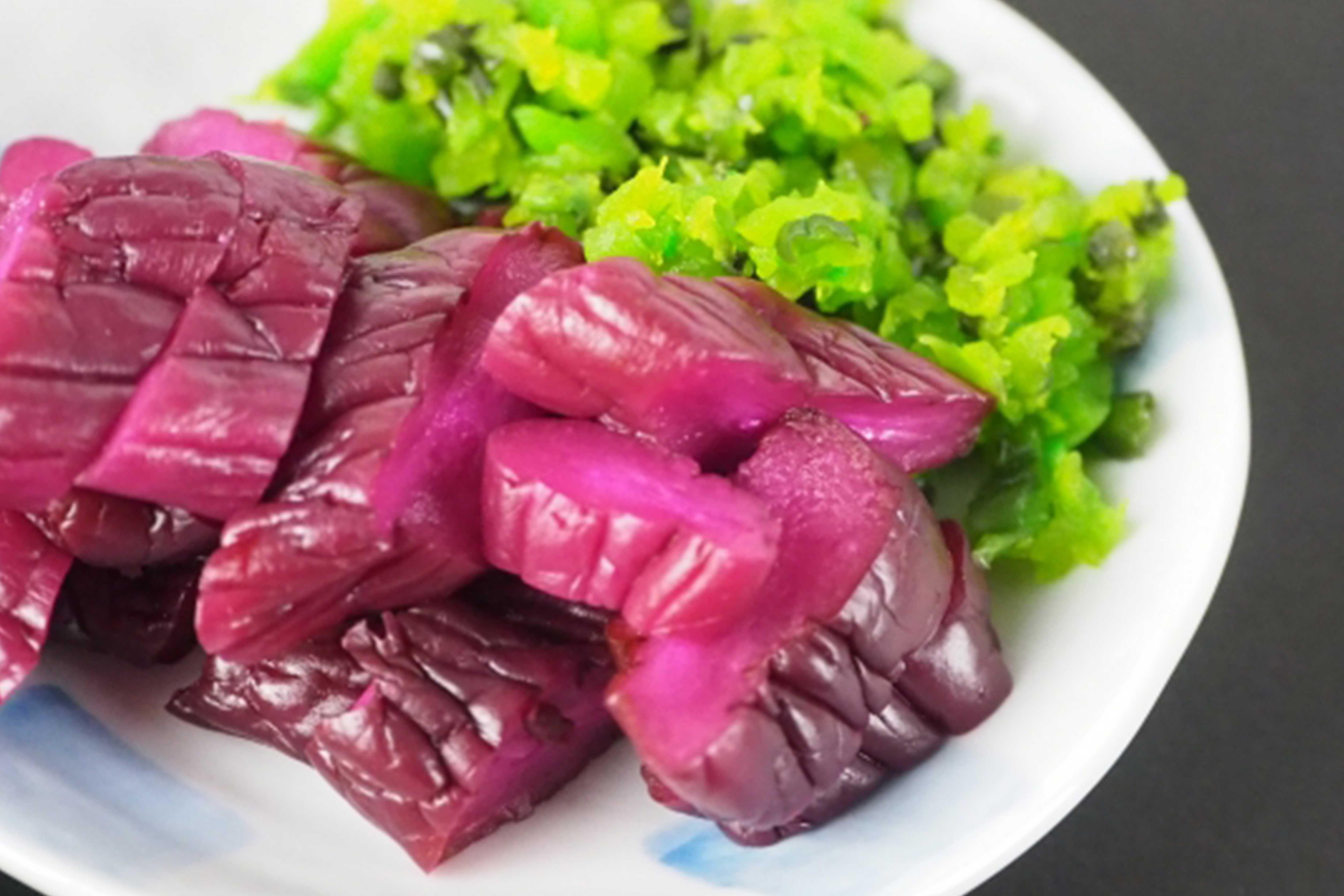
Japanese pickles
Miso (味噌)
Like natto, miso is a kind of fermented food, made from soybean paste and usually used in soups or to add additional taste to sauces and dressings. Thanks to its high nutrient content (Vitamin K, manganese, zinc, protein, and calcium) it is highly suggested for your diet, as it helps improve digestion and strengthen your immune system.
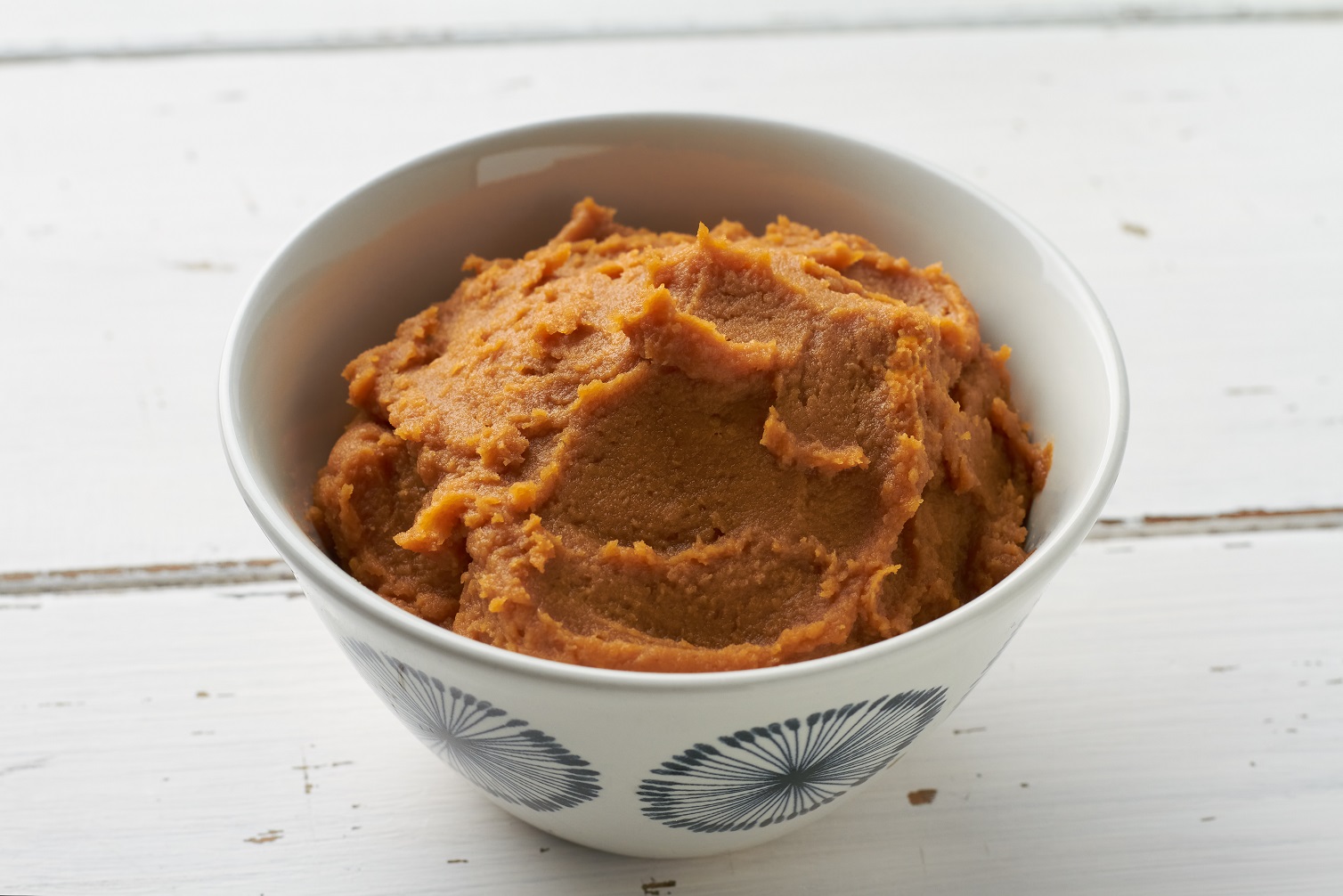
Miso paste
Besides sauces, the most common product you will find made from miso is miso shiru (miso soup).
Miso soup is another must-try for your Japanese breakfast. Perfect to drink with every kind of food, it can either be made from scratch -- meaning that you need to also prepare the broth (dashi - usually made from fish or seaweed) -- or from ready-to-use miso soup packs. These packs come in different flavors, like wakame seaweed or clam soup. Check our website for more than 300 different types of miso soup!
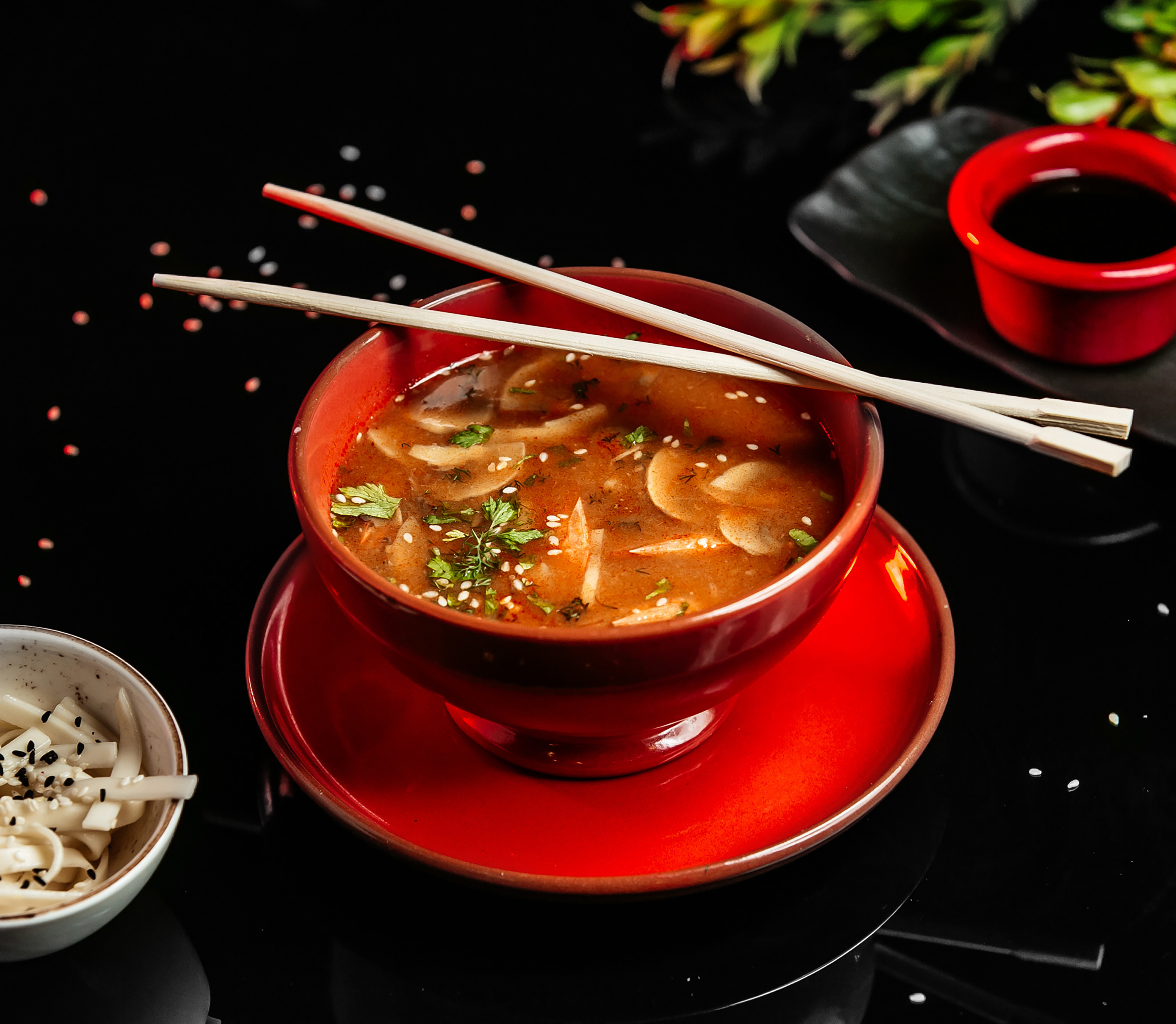
Miso soup made from "aka dashi" (red broth)
Green tea and its benefits
By now you should have a better idea of what kinds of foods make up the typical diet in Japan.
But just like a regular meal at the dinner table, no doubt you've worked up quite a thirst -- so let's take a look at the quintessential Japanese drink: green tea (ryokucha, 緑茶)!
The merits of going green
When it comes to Japanese beverages, green tea is definitely one of the most popular drinks. It's delicious, for starters, and can accompany all your meals without covering the taste of your food.
Moreover, green tea is famous for its exceptional dietary properties.
Besides being a strong antioxidant, catechin -- a phenolic compound found in green tea -- is mainly known for its fat-burning effects, making green tea extract high in phenols one of the most used ingredients in many diet supplements.
Several studies found that the catechins in green tea and caffeine may have a role in increasing energy metabolism, which may lead to weight loss. Moreover, an additional analysis of several different tea polyphenol-induced weight loss mechanisms suggested that catechins and caffeine synergistically produced weight loss effects, as opposed to them being the result of caffeine alone. However, the impact of drinking green tea on weight loss is unlikely to be of clinical importance.
If you are looking for Japanese green tea, take a look at our products here!

Japanese green tea
And that’s all for our article!
If you are considering starting a new diet, you should definitely add some Japanese food to it - rest assured you will be able to enjoy every day delicious meals while keeping yourself healthy and fit!
Thanks for reading!
Other articles you'll enjoy
For more adventures through the world of Japanese cuisine, check out the articles below:
- Japanese Cuisine Dreams: From Architect to Chef
- 9 Best Matcha Snacks to Buy From Japan
- Japanese Kit Kat Flavors: 15 You Never Knew Existed
Thanks for reading!
....................................................
Like this article? Please share to
....................................................
Related Topics

